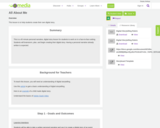
This lesson is to help students create their own digital story.
- Subject:
- Career and Technical Education
- Elementary English Language Arts
- Literature
- Material Type:
- Activity/Lab
- Author:
- Libby
- Date Added:
- 06/04/2021

This lesson is to help students create their own digital story.

Students explore their towns' landmarks, symbols, and people; look at brochures and other informational tools; practice writing for a specific audience and revising; and work collaboratively to create a brochure.
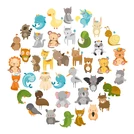
This is a lesson plan to introduce research and writing informational text based on this research.Example of openly licensed Citation: "Animals - Cute Zoo" by Lesya Skripack from Russia is licensed under FreePik. Image Created by: Lesya Skripack
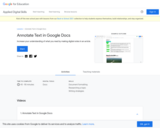
Students learn how to annotate text in Google Docs.

Bio Cube is a useful summarizing tool that helps students identify and list key elements about a person for a biography or autobiography.
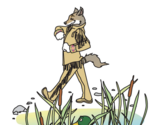
Coyote tales are part of the Paiute oral tradition used to teach proper behavior and values from an early age. If a story contains the Coyote character it is a winter time story that should only be told during the winter. The Coyote illustrates the mischievous nature in all of us. This Paiute Coyote Story booklet is part of the Native American Indian Literacy Project storybook series for the six main Utah Tribal Nations. The project was led by Shirlee A. Silversmith, American Indian education specialist for the Utah State Office of Education. There are five stories per Tribe, with a total of 30 booklets, plus an ABC book. The set of Indian Tribal stories may be utilized by elementary classroom teachers to (1) develop an understanding and appreciation of Native American culture and societal contributions (2) provide a genre of text for the application of reading strategies, and (3) facilitate the mastery of various Utah Core Content Curriculum objectives. The Native American Indian Literacy Project was made possible by funds from the Utah State Office of Education (USOE). It is a joint effort of the USOE and San Juan School District Media Center.
The original set has 30 booklets, measuring 5.5” x 8.5” each, and illustrated by tribal members. The booklets were formatted to be printed and assembled. This version of the book has been updated to accommodate using a projector or smart board with pages appearing in order.
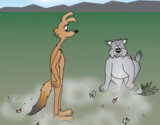
According to Shoshone tradition, Coyote tales should only be told during the winter time. Instead of using the "lecture" method of teaching morals and life lessons, Shoshone parents use tales such as "Handsome Coyote and Wildcat" to teach their children that there are consequences for their actions. This Shoshone story booklet is part of the Native American Indian Literacy Project storybook series for the six main Utah Tribal Nations. The project was led by Shirlee A. Silversmith, American Indian education specialist for the Utah State Office of Education. There are five stories per Tribe, with a total of 30 booklets, plus an ABC book. The set of Indian Tribal stories may be utilized by elementary classroom teachers to (1) develop an understanding and appreciation of Native American culture and societal contributions (2) provide a genre of text for the application of reading strategies, and (3) facilitate the mastery of various Utah Core Content Curriculum objectives. The Native American Indian Literacy Project was made possible by funds from the Utah State Office of Education (USOE). It is a joint effort of the USOE and San Juan School District Media Center.
The original set has 30 booklets, measuring 5.5” x 8.5” each, and illustrated by tribal members. The booklets were formatted to be printed and assembled. This version of the book has been updated to accommodate using a projector or smart board with pages appearing in order.
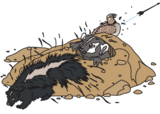
This Paiute booklet is part of the Native American Indian Literacy Project storybook series for the six main Utah Tribal Nations. The project was led by Shirlee A. Silversmith, American Indian education specialist for the Utah State Office of Education. There are five stories per Tribe, with a total of 30 booklets, plus an ABC book. The set of Indian Tribal stories may be utilized by elementary classroom teachers to (1) develop an understanding and appreciation of Native American culture and societal contributions (2) provide a genre of text for the application of reading strategies, and (3) facilitate the mastery of various Utah Core Content Curriculum objectives. The Native American Indian Literacy Project was made possible by funds from the Utah State Office of Education (USOE). It is a joint effort of the USOE and San Juan School District Media Center.
The original set has 30 booklets, measuring 5.5” x 8.5” each, and illustrated by tribal members. The booklets were formatted to be printed and assembled. This version of the book has been updated to accommodate using a projector or smart board with pages appearing in order.
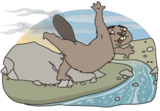
Tookwee’nup, legends, are Paiute stories told during the winter months. They are mythical, often humorous, and they contain a moral. Tookwee’nup teach Paiute children why things are like they are. The stories give spiritual instruction and expose the children to human characteristics that we all possess. This Paiute booklet is part of the Native American Indian Literacy Project storybook series for the six main Utah Tribal Nations. The project was led by Shirlee A. Silversmith, American Indian education specialist for the Utah State Office of Education. There are five stories per Tribe, with a total of 30 booklets, plus an ABC book. The set of Indian Tribal stories may be utilized by elementary classroom teachers to (1) develop an understanding and appreciation of Native American culture and societal contributions (2) provide a genre of text for the application of reading strategies, and (3) facilitate the mastery of various Utah Core Content Curriculum objectives. The Native American Indian Literacy Project was made possible by funds from the Utah State Office of Education (USOE). It is a joint effort of the USOE and San Juan School District Media Center.
The original set has 30 booklets, measuring 5.5” x 8.5” each, and illustrated by tribal members. The booklets were formatted to be printed and assembled. This version of the book has been updated to accommodate using a projector or smart board with pages appearing in order.

To the Shoshone, the elders are their teachers, and the words of the elders are important truths for them. The elders have lived long lives, and their stories guide and protect the Shoshone. This Shoshone booklet is part of the Native American Indian Literacy Project storybook series for the six main Utah Tribal Nations. The project was led by Shirlee A. Silversmith, American Indian education specialist for the Utah State Office of Education. There are five stories per Tribe, with a total of 30 booklets, plus an ABC book. The set of Indian Tribal stories may be utilized by elementary classroom teachers to (1) develop an understanding and appreciation of Native American culture and societal contributions (2) provide a genre of text for the application of reading strategies, and (3) facilitate the mastery of various Utah Core Content Curriculum objectives. The Native American Indian Literacy Project was made possible by funds from the Utah State Office of Education (USOE). It is a joint effort of the USOE and San Juan School District Media Center.
The original set has 30 booklets, measuring 5.5” x 8.5” each, and illustrated by tribal members. The booklets were formatted to be printed and assembled. This version of the book has been updated to accommodate using a projector or smart board with pages appearing in order.
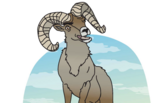
Tookwee’nup are Paiute legends or stories told during the winter months. They are mythical and humorous, and they often contain a moral. A Paiute elder explained, "The most important purpose of Tookwee’nup is to teach children to laugh at themselves. When a child falls and cries, the parent's laughter turns the child's tears into joy. Thus, when the child becomes an adult, he then has the ability to take calamity in stride." This Paiute booklet is part of the Native American Indian Literacy Project storybook series for the six main Utah Tribal Nations. The project was led by Shirlee A. Silversmith, American Indian education specialist for the Utah State Office of Education. There are five stories per Tribe, with a total of 30 booklets, plus an ABC book. The set of Indian Tribal stories may be utilized by elementary classroom teachers to (1) develop an understanding and appreciation of Native American culture and societal contributions (2) provide a genre of text for the application of reading strategies, and (3) facilitate the mastery of various Utah Core Content Curriculum objectives. The Native American Indian Literacy Project was made possible by funds from the Utah State Office of Education (USOE). It is a joint effort of the USOE and San Juan School District Media Center.
The original set has 30 booklets, measuring 5.5” x 8.5” each, and illustrated by tribal members. The booklets were formatted to be printed and assembled. This version of the book has been updated to accommodate using a projector or smart board with pages appearing in order.
Ask the students general questions about inventions. Present the book "Pop! The Invention of Bubble Gum." Show the students other books about bubble gum. Generate enthusiasm for creating your own inventions. Make bubble gum from scratch using bubble gum making kit.

What do your students think about each other? Find out as you teach them the concepts of acrostic poems and challenge them to write an uplifting acrostic about a classmate.

This lesson uses comic strip frames to define plot and reinforce the structure that underlies a narrative. Students finish by writing their own original narratives.

This unit introduces students to a variety of poetic forms and elements, as they compile their own collections of poetry.

Students create poetry collections with the theme of ńgetting to know each other.î They study and then write a variety of forms of poetry to include in their collections.

Students write authentic newspaper stories, including learning about various aspects of newspapers, such as writing an article, online articles, newspaper reading habits, and layout and design techniques.

Research indicates that most standards documents articulate far more content than can be taught in the time available to K–12 teachers. In response, analysts at Marzano Resources sought to identify, as objectively as possible, a focused set of critical concepts for each K–12 grade level in the content areas of English language arts (ELA), mathematics, science, and social studies.
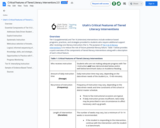
Tier II (supplemental) and Tier III (intensive) interventions include evidence-based programs, practices, and strategies provided to students who require additional support after receiving core literacy instruction (Tier I). The purpose of Tier II & III literacy interventions is to reduce the risk of future potential literacy failure. Table 1 below provides a quick overview of the components of tiered literacy interventions, along with a description of each critical feature.

Students thoroughly explore identifying synonyms and adjectives before using them to add variety and interest to their own writing.